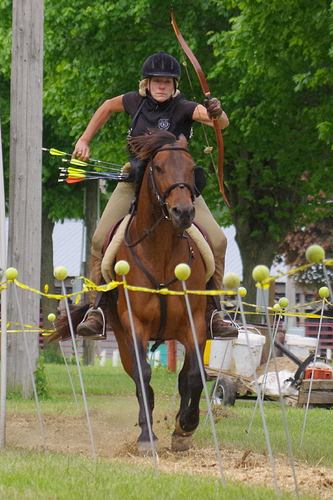Hunters can be incredibly frustrating; because what looks easy and effortless on the show ground can take years of hard work to produce.
I’d like to second, third or fourth the advice to ask to ride a schoolmaster, maybe even lease one short term. You are trying to reproduce something that you’ve never experienced, only ever had explained, and perhaps not explained well. Sitting on a horse that actually picks up the correct lick in its hunter circle and carries it to the first fence and jumps out of stride can be life changing. (Yes, you’ll still have to sit up and steady on the last line coming home - they’re horses, not machines.) Having felt what it’s supposed to feel like will be a huge help when you try to recreate it on your horse.
I absolutely agree with everyone who’s said, if you’re not enjoying it, do something else. Horses are supposed to be our joy, and most of us make a lot of sacrifices to keep horses and riding in our lives. You should be questioning your path if you’re not understanding/not enjoying it.
That said, I will tell you that the problems that you’re experiencing are absolutely going to carry over to other disciplines. You’ll still need to understand pace, balance, impulsion and ring geometry in other disciplines. If I’m at a low level jumper show or an event, I can absolutely tell the riders who came from a solid hunter background and those who didn’t, because of their ability to establish a rhythm in the canter and keep it all way through the course. However, if you’re going to have more fun working on those things in a different discipline, go for it!
Before you do, though, it might be helpful to invest a little time learning about hunters and how they’re judged. Ask your coach to sit with you during a couple of classes at a show and critique the trips; maybe even mark a mock card and explain the notations and placings to you. There are some excellent books and online resources as well. (PM me if you like.) I’m astonished at the number of people showing who think that the judge doesn’t like them or their horse when they pin a late change below a trip with a chip.
I grew disillusioned with the hunters, too; I just didn’t have the right combo of money and talent to play in the big leagues. But I wouldn’t change my background in the hunters for anything; the skills I gained in my time in hunterworld were invaluable when I moved on to other disciplines.
At long last, I’m going to give a concrete answer to your first question: consider moving on when you can ride a trip at the same pace and rhythm all the way around a course. I don’t care if that pace means you add in every line, or leave out a stride in every line; just that the pace stays the same from beginning to end, and that the horse jumps from ~ the same spot at every fence, be it long, short or just right. Doesn’t have to be on your horse, either. And the height of the fences doesn’t really matter - this can be just as hard to do over poles on the ground as it is over 2’6"
Best of luck to you, and please post back and update us on your journey.



